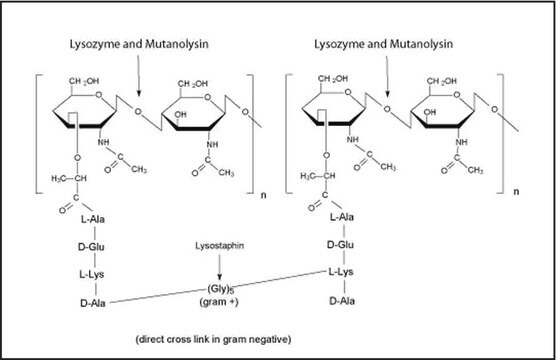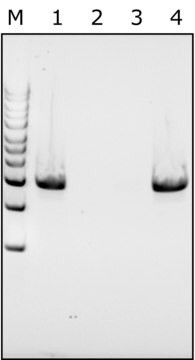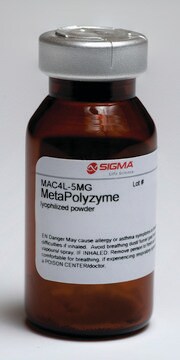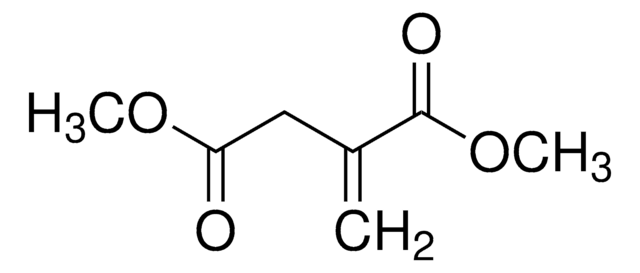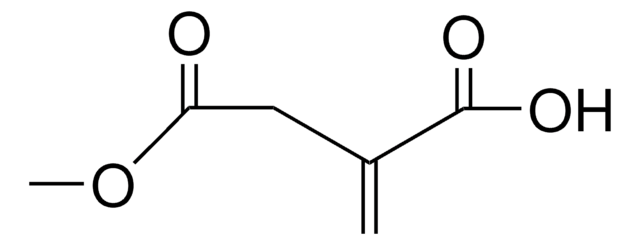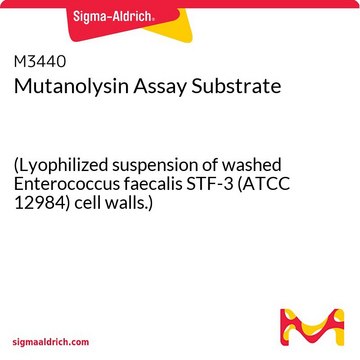SAE0091
Lisostafina
free of DNA contaminants, ≥500 units/mg protein, lyophilized powder, suitable for Microbiome research
Sinônimo(s):
Endopeptidase glicil-glicina
About This Item
Produtos recomendados
Nome do produto
Lisostafina, free of DNA contaminants, suitable for Microbiome research, lyophilized powder, ≥500 units/mg protein
fonte biológica
microbial (Staphylococcus staphylotyticus)
Formulário
lyophilized powder
atividade específica
≥500 units/mg protein
peso molecular
27 kDa
Características
DNA free
Condições de expedição
wet ice
temperatura de armazenamento
−20°C
Procurando produtos similares? Visita Guia de comparação de produtos
Categorias relacionadas
Aplicação
Lysostaphin is a zinc metalloenzyme isolated from a bacterial culture of Staphylococcus staphylolyticus. It has specific lytic action against other Staphylococcus species, including S. aureus.1,2 Lysostaphin has
hexosaminidase, amidase, and endopeptidase activities. It cleaves polyglycine crosslinks in the cellular wall which leads to cell lysis of Staphylococcus species, but not of other bacterial genera. [Pharmaceuticals 2010, 3(4), 1139-1161]
Lysostaphin is a single polypeptide chain of 246 amino acids, a molecular mass of 26,926 Da, isoelectric point of 9.5, (5) and an activity pH optimum of 7.5.(6)
Ações bioquímicas/fisiológicas
pH ideal para atividade: aprox. 7,5
Definição da unidade
forma física
Palavra indicadora
Danger
Frases de perigo
Declarações de precaução
Classificações de perigo
Resp. Sens. 1
Código de classe de armazenamento
11 - Combustible Solids
Classe de risco de água (WGK)
WGK 3
Ponto de fulgor (°F)
Not applicable
Ponto de fulgor (°C)
Not applicable
Escolha uma das versões mais recentes:
Certificados de análise (COA)
Não está vendo a versão correta?
Se precisar de uma versão específica, você pode procurar um certificado específico pelo número do lote ou da remessa.
Já possui este produto?
Encontre a documentação dos produtos que você adquiriu recentemente na biblioteca de documentos.
Os clientes também visualizaram
Artigos
An overview of human microbiome research, workflow challenges, sequencing, library production, data analysis, and available microbiome reagents to support your research.
Global Trade Item Number
| SKU | GTIN |
|---|---|
| SAE0091-2MG | 4061838661395 |
Nossa equipe de cientistas tem experiência em todas as áreas de pesquisa, incluindo Life Sciences, ciência de materiais, síntese química, cromatografia, química analítica e muitas outras.
Entre em contato com a assistência técnica